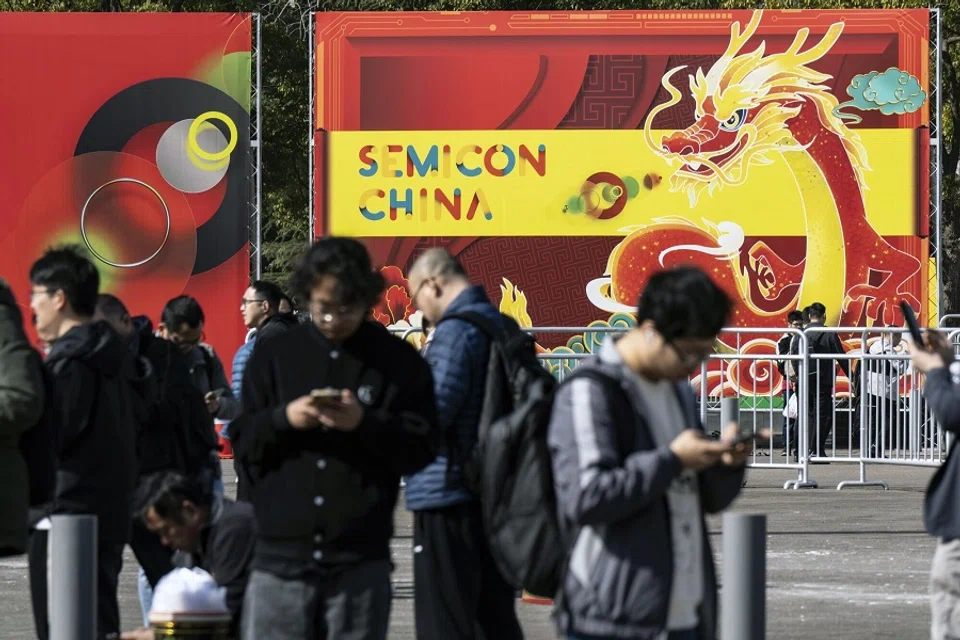China's AI race is not about expanding users
Technology expert Yin Ruizhi notes that unlike traditional network-based technology, OpenAI-style AI is not as reliant on networks. Thus, compared with the US, China's development of AI focuses more on technology rather than expanding user base.

Following the OpenAI explosion, artificial intelligence (AI) technology is rapidly permeating everyday life in the US. Recently, veteran Democratic operative Steve Kramer openly admitted to using AI technology to impersonate US President Joe Biden's voice to send out bogus robocalls to voters with the intention of disrupting the New Hampshire presidential primaries.
AI developments in the US
It was previously reported that a Texas-based company was allegedly behind the robocalls, but the person who got the company to launch the campaign was not identified. It was not until 25 February that Kramer publicly acknowledged that he was behind the call.
Based on his descriptions, Kramer had simulated Biden's voice with AI technology and launched robocalls to 5,000 Democratic-leaning voters in the state on the night of 20 January before the New Hampshire primary.
The US's development in the areas of mass communication and personal services is significantly faster than other countries including China. According to Forbes, many companies are currently working to explore and broaden the applications of AI. Some of the most popular applications include digital personal assistants (47%), followed by inventory management (40%). In addition, 35% of businesses are also using AI for creative ideation and content production, while 33% are leveraging AI for product recommendations.
Meanwhile, 30% of businesses are also using AI to optimise accounting and supply chain operations respectively, while 26% are utilising AI in recruitment and talent sourcing. These statistics highlight the widespread proliferation of AI technology in US industries.

In the mobile internet era, Chinese tech enterprises are even more advanced than the US's in terms of personal services and basic communication. Yet why do these fields seem particularly quiet in China amid this AI wave?
Apart from the various factors discussed in my previous article, another major factor is that this round of AI technology focuses on non-network-based applications.
... as network-based technologies become popularised, tech platforms and the capitalists behind them are motivated to rapidly scale up by subsidising users and merging with competitors.
Exponential increases in value
Network-based technologies refer to information technology that satisfies Metcalfe's Law, whereby the value of a network is proportional to the square of the number of connected users or devices in the network. This is because the value of a network mainly comes from the interconnections and interactions between users; each additional user not only adds a new node but could also form a new connection with every existing user.
For example, in theory, a network with ten nodes would form 45 connections (10 × (10 - 1) ÷ 2). Increase the number of nodes to 100, and 4,950 connections (100 × (100 - 1) ÷ 2) would be formed.
Each additional node in a network exponentially increases the potential number of connections and interactions, thus significantly increasing the value and utility of the entire network. Thus, the value of an online platform or service increases exponentially as the number of users increases.

Take for example ride-hailing platforms such as Uber or Didi. Theoretically, with each added vehicle on the ride-hailing platform, all users on the platform would simultaneously have one additional vehicle to choose from within its coverage area. Similarly, with each added user on the ride-hailing platform, all vehicles within the coverage area would have more customers to serve and more potential routes to cover.
Let's say in the middle of picking up a customer, the driver picks up another user, such that the cost of the ride for both users decreases, while the platform's revenue and the driver's real revenue simultaneously increases.
Thus, as network-based technologies become popularised, tech platforms and the capitalists behind them are motivated to rapidly scale up by subsidising users and merging with competitors. For example, the China business of US ride-hailing platform Uber eventually merged with Chinese ride-hailing platform Didi.
The simple truth is that even if online users of OpenAI suddenly doubled, people who interact with OpenAI online will not find that OpenAI has become smarter.
Not driven by profit-making
In its scope of application, OpenAI-style AI is not as reliant on networks. In theory, the more users OpenAI has, the more data it can optimise in the process of its actual growth. This means that its growth will be relatively faster, but such growth does not follow Metcalfe's Law.

In practical applications, the AI's training and inference (making predictions or decisions based on previously trained models and input data) are separate, and the current number of users of each product does not significantly change the value of the platform at that time. The simple truth is that even if online users of OpenAI suddenly doubled, people who interact with OpenAI online will not find that OpenAI has become smarter.
As China's labour costs are much lower than the US's even in the most mature fields of AI at present, tech giants are even less motivated to pursue short-term technological popularisation for profit alone in the absence of a solution to technological chokepoints.
Thus, Chinese tech companies do not pay much attention to the number of users they can accumulate in the short term, but instead focus on how to make breakthroughs in the research and development of chips and its corresponding model, as mentioned in my previous article.
An important reason for the rapid development of the use of AI in the personal services industry in the US is that the US's labour costs are much higher than China's. Hence, for the same cost of AI, American enterprises are more motivated to accelerate the popularisation of such technologies from a replacement cost and profit-seeking perspective.
As China's labour costs are much lower than the US's even in the most mature fields of AI at present, tech giants are even less motivated to pursue short-term technological popularisation for profit alone in the absence of a solution to technological chokepoints. This is the reason why Chinese tech giants appear to be less keen on promoting the use of AI in personal services in the short term.





